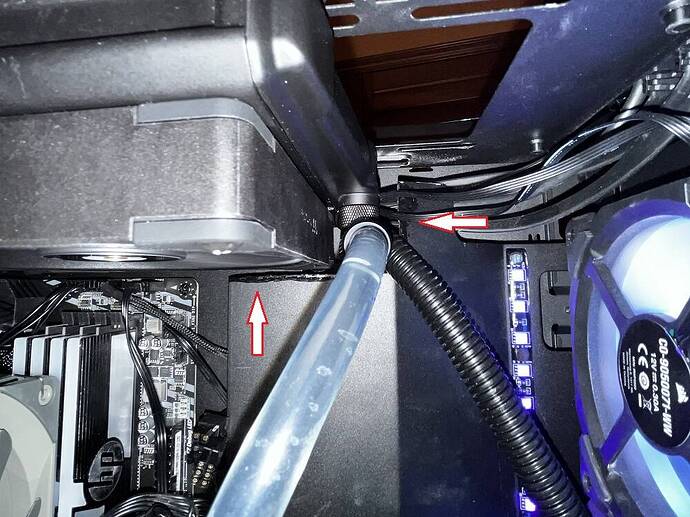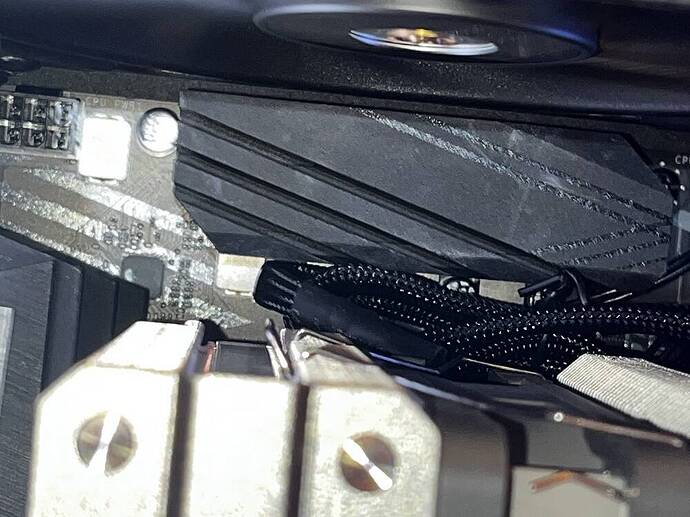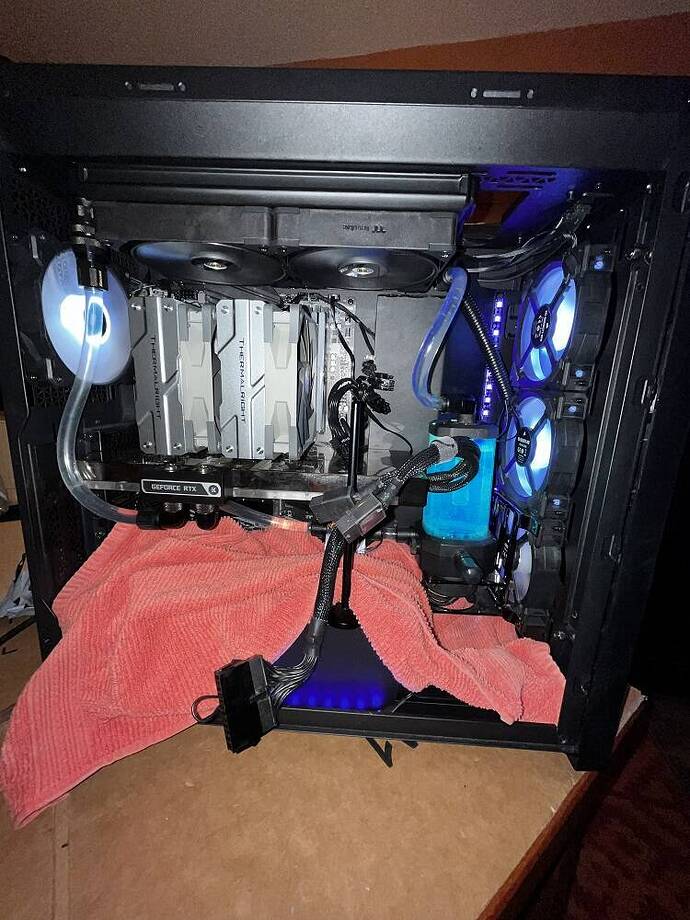It all started when I decided to upgrade my custom loop radiator. GPU temp was getting uncomfortably high using DLSS DLAA. In some areas in some aircraft I was seeing 78°C core, and 92°C hot spot temps, with the 3090 Ti at a constant 99% load and 440W power draw. I decided to replace the 240mm, thin (25mm) radiator and its two 120mm case fans with a beefier 280mm, thick (60mm) radiator and two 140mm high static pressure fans designed for use with radiators.
The first thing I noticed was that the wider/longer radiator was going to bump up against the internal duct in my Corsair 5000X case. I keep this duct in place to direct air from three side fans over the motherboard, and wanted to keep it. So I had no choice but to remove the duct and cut it with a dremel. I found some 30 year-old Testors black enamel paint in my toolbox. To my surprise, the paint was still good. That problem was solved.
Here’s where things really went wrong…
I’d added up the thickness of the new radiator and one of the fans I was replacing, and the combo was going to slide right into place. Yay!
Problem was that the new fans were (a lot) thicker, and bumped into a heatsink at the top of the motherboard. What’s the old saying? “Measure twice, cut once.” I failed.
So I returned the HWLabs GTX 280mm thick radiator, and after (this time) carefully measuring the thickness of the rad/fan combo, and the space between the top of the case and the heatsink, I ordered an HWLabs GTS 280mm thin X-flow radiator. You can see here how tight the fit is. That’s about 1.5mm clearance. But it fits.
Here’s a pic of everything in place and doing a 24-hour final test prior to connecting CPU / GPU / MOBO power.
Lesson to be learned: When doing case mods, there are a lot of tight spaces. Make sure you take the time to measure anything and everything you intend to install before ordering it. I’ve been down almost two weeks working on this.
I ran a test today, and in my HJet flying in 4K with DLSS DLAA over SoCal @ FL100 my temps improved from 78° core / 93° hot spot to 70°/ 87°. So it was all worth it, since I can now use DLAA with confidence.
Side note: I had a GREAT experience ordering from Performance PC’s. The items I wanted were all in stock, they ship fast, their prices are reasonable, and most importantly, their customer support is exemplary. Quick email responses, and a clear mission to keep their customers happy. They gave me a full refund for the open box GTX radiator, even though it was clearly my fault that I’d ordered the wrong part. The only downside is the shipping charges - it cost me $20 to UPS the GTS radiator in. They do however offer free shipping over $99.00, but that radiator only cost $62.00, so I had to bite the bullet and pay the $20.00. Oh well. If you’re in the US and want to do liquid cooling, or other case mods, you can buy with confidence from them.


